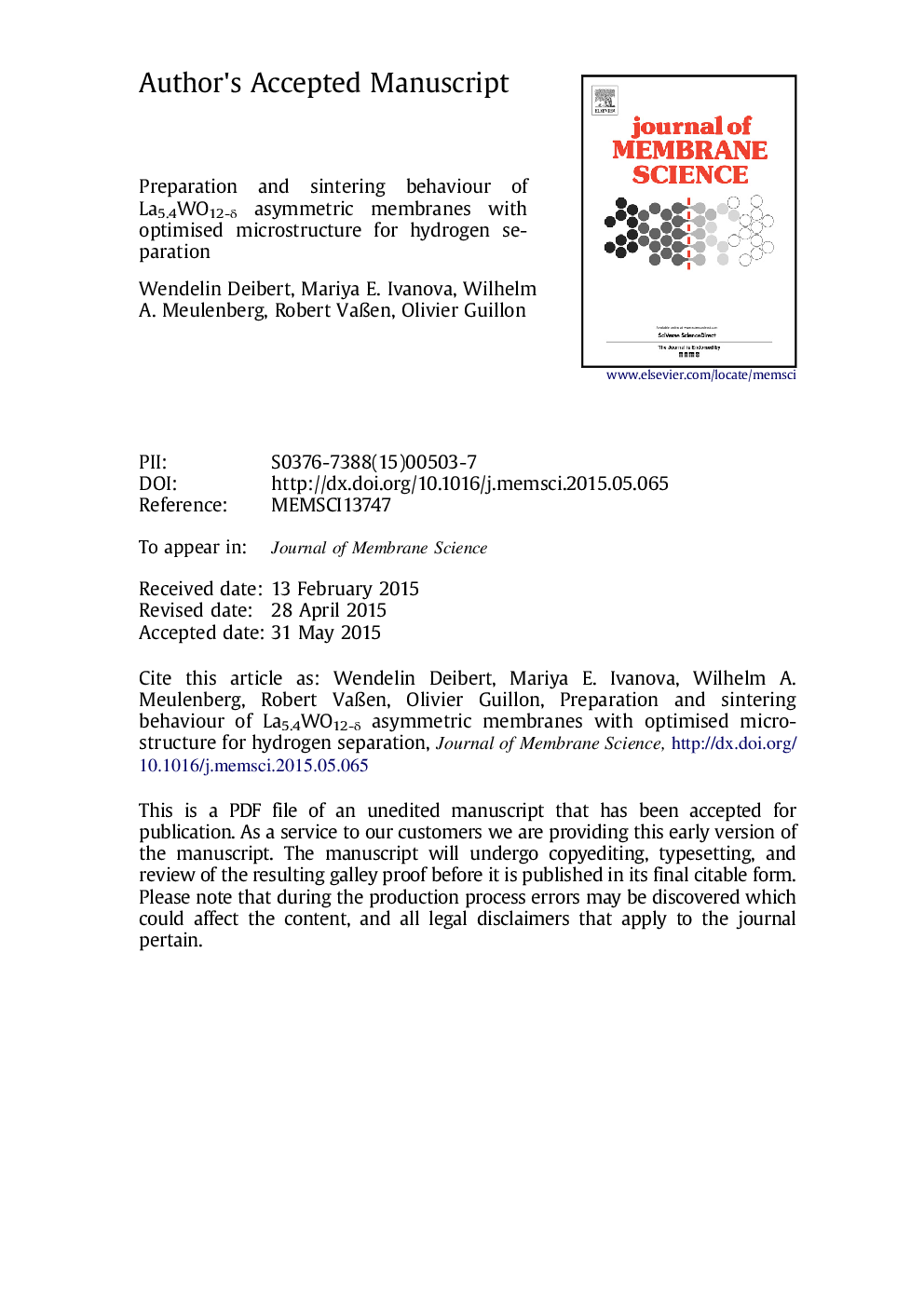| Article ID | Journal | Published Year | Pages | File Type |
|---|---|---|---|---|
| 7021268 | Journal of Membrane Science | 2015 | 58 Pages |
Abstract
La5.4WO12âδ (LaWO) is a promising membrane candidate for a variety of H2-related applications due to its appreciable levels of mixed proton-electron conduction and its stability in moist reducing atmospheres at elevated temperatures. Governed by Wagner theory, the H2 permeation performance of a membrane can be enhanced by reducing its thickness. Therefore, the present work deals with preparing LaWO supported membranes with reduced thickness and optimised microstructure. Combining a dense membrane with a porous supporting layer is associated with mismatched sintering rates, which ultimately lead to bending effects. Therefore, the sintering behaviour of both the dense membrane and the porous substrate must be carefully adjusted to each other. For this purpose, single and co-fired membrane and substrate layers were produced by tape casting. Sintering experiments were carried out with an optical dilatometer. The shrinkage and microstructural evolution of the layers were evaluated in terms of the anisotropic shrinkage forces and the membrane rigidness counteracting the substrate shrinkage. The results were used to develop asymmetric LaWO membranes with optimal microstructure. High membrane density was combined with a substrate porosity of ~30% and minimised bending (40 µm). The LaWO membrane-substrate assembly displayed a He leakage of 10â5 hPa dm³ cmâ2 sâ1, which is a value that satisfies further practical demands.
Related Topics
Physical Sciences and Engineering
Chemical Engineering
Filtration and Separation
Authors
Wendelin Deibert, Mariya E. Ivanova, Wilhelm A. Meulenberg, Robert VaÃen, Olivier Guillon,
